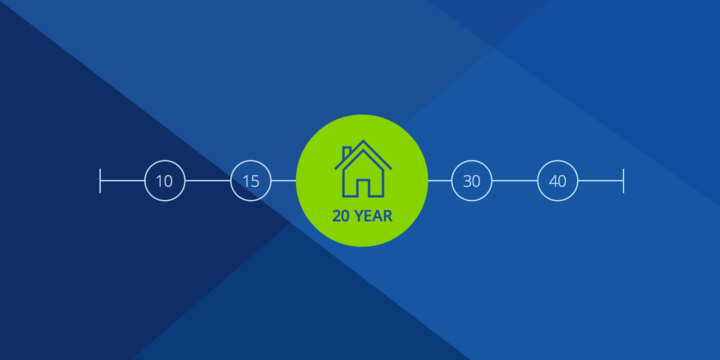How to Avoid PMI: Alternatives to Mortgage Insurance
Most loans require private mortgage insurance (PMI) when a down payment is less than 20 percent. But there are ways you can avoid paying it. Here's how.

Written by Chris Sessions on September 15, 2016
Mortgage insurance — also called private mortgage insurance (PMI) — is a premium borrowers pay for the extra risk lenders must take when a down payment is less than 20%. But even if you have a smaller down payment, there are PMI alternatives. Below is a breakdown of different types of mortgage insurance and tips on how to avoid PMI.
Types of Mortgage Insurance
There are two ways you can be charged PMI if your down payment is less than 20% on a conventional loan.
The most common way is incurring PMI as a separate monthly fee in addition to your mortgage payment. This is called Borrower Paid PMI. You can model your own estimates for how this might look by using a mortgage calculator — just make sure you check the “Include PMI” box.
The other way is when your PMI is included in your mortgage payment in the form of a higher rate on your mortgage. This is called Lender Paid PMI. It means you don’t have a separate monthly fee for mortgage insurance, and instead pay a rate that’s about 0.375% higher than normal on your mortgage loan—and therefore a higher monthly mortgage payment.
Lender Paid and Borrower Paid PMI are for Fannie Mae- and Freddie Mac-backed conforming loans up to $417,000 (or higher in some local areas), and the reason it’s called “private” mortgage insurance is because the mortgage insurance provider is a private entity separate from the lender.
Another low down payment option is an FHA loan. With these loans, the FHA backs the loan and is also the insurance provider, so the mortgage insurance goes by the name FHA Mortgage Insurance Premium (MIP).
In total, FHA MIPs can be slightly more expensive— especially for lower down payments — because you have monthly insurance premiums plus an upfront insurance premium that you can either pay in cash or add to your loan amount.
Questions about mortgages? Find a lender on Zillow

How to Avoid PMI
Borrowers with low down payments often ask: how can I avoid PMI?
The easiest way to avoid PMI is by making a down payment of 20% or more. If you do this, you won’t have mortgage insurance on any loan.
Another way to avoid PMI is to use a second mortgage. The first mortgage must be capped at 80 percent of the home’s value to avoid PMI, and a second mortgage will usually allow for another 10percent financing on top of this, for a total of 90% financing.
If you do this, you will have a second mortgage payment, which can sometimes make the total cost of your financing the same as if you used Lender Paid or Borrower Paid PMI. So ask your lender to present comparisons of all three options.
Also note that if you’re putting down less than 10%, the second mortgage option is usually not available, because lenders typically cap total allowable financing at 90% if you’re using a second mortgage.
Alternatives to PMI
Borrowers with low down payment also often ask: are there alternatives to PMI?
The important distinction of this question versus the “How do I avoid PMI?” question is that alternatives often have the same cost, but they are just marketed differently.
An example that illustrates this point is a jumbo loan above $417,000.
Some jumbos allow for less than 20% down with no mortgage insurance. This will be marketed as a way to avoid mortgage insurance. However, from a fee standpoint, you’re not necessarily saving money because you’ll pay a higher rate on this loan -- just like you would with Lender Paid PMI on a conforming loan.
So technically, it’s an alternative to mortgage insurance, but you’re not avoiding the fees. This is clear in the marketing of a conforming loan with Lender Paid PMI, but it’s less clear when you’re getting a jumbo loan with less than 20% down, because these loans are usually marketed with phrases like “no mortgage insurance.”
How to Cancel PMI
If you have a conventional conforming loan, you can typically ask your lender to consider cancelling your mortgage insurance once you have reached 22% equity in your home — meaning that your loan has been paid down to 78% of the purchase value of your home.
If you think you’ll get to this level within a reasonable number of years, you will want Borrower Paid PMI instead of Lender Paid PMI.
If you have Lender Paid PMI, your mortgage insurance comes in the form of a higher rate on the loan, and this increased cost is therefore with you for the life of the loan. The same would go for a jumbo mortgage, since there’s no mortgage insurance fee for low-down jumbos, but instead, the rate is higher.
For FHA loans, you’ll most likely pay the FHA MIP for the life of the loan. Here’s a breakdown of when FHA MIPs are cancelled.
Questions about mortgages? Find a local lender on Zillow who can help.
Thinking about buying but not sure where to begin?
Start with our affordability calculator.
See what you can affordHow much home can you afford?
See what's in reach with low down payment options, no hidden fees and step-by-step guidance from us at
Zillow Home Loans.
Zillow Home Loans, NMLS # 10287. Equal Housing Lender
Calculate your BuyAbility℠
Related Articles
Get a mortgage with Zillow Home Loans
Go from dreaming to owning with low down payment options, competitive rates and no hidden fees. A dedicated loan officer will guide you until you have your keys in hand.

Zillow Home Loans, NMLS #10287. Equal Housing Lender.



